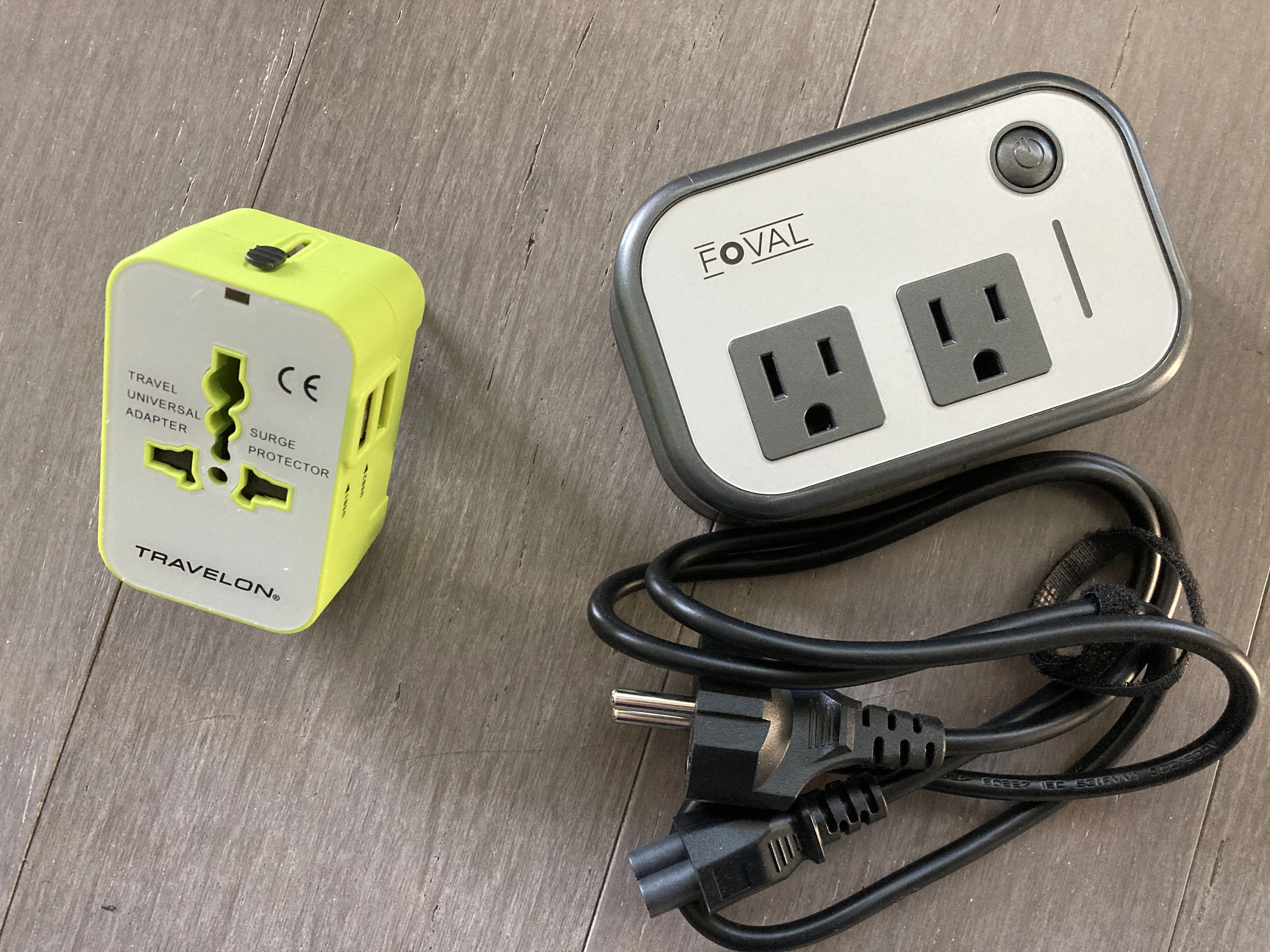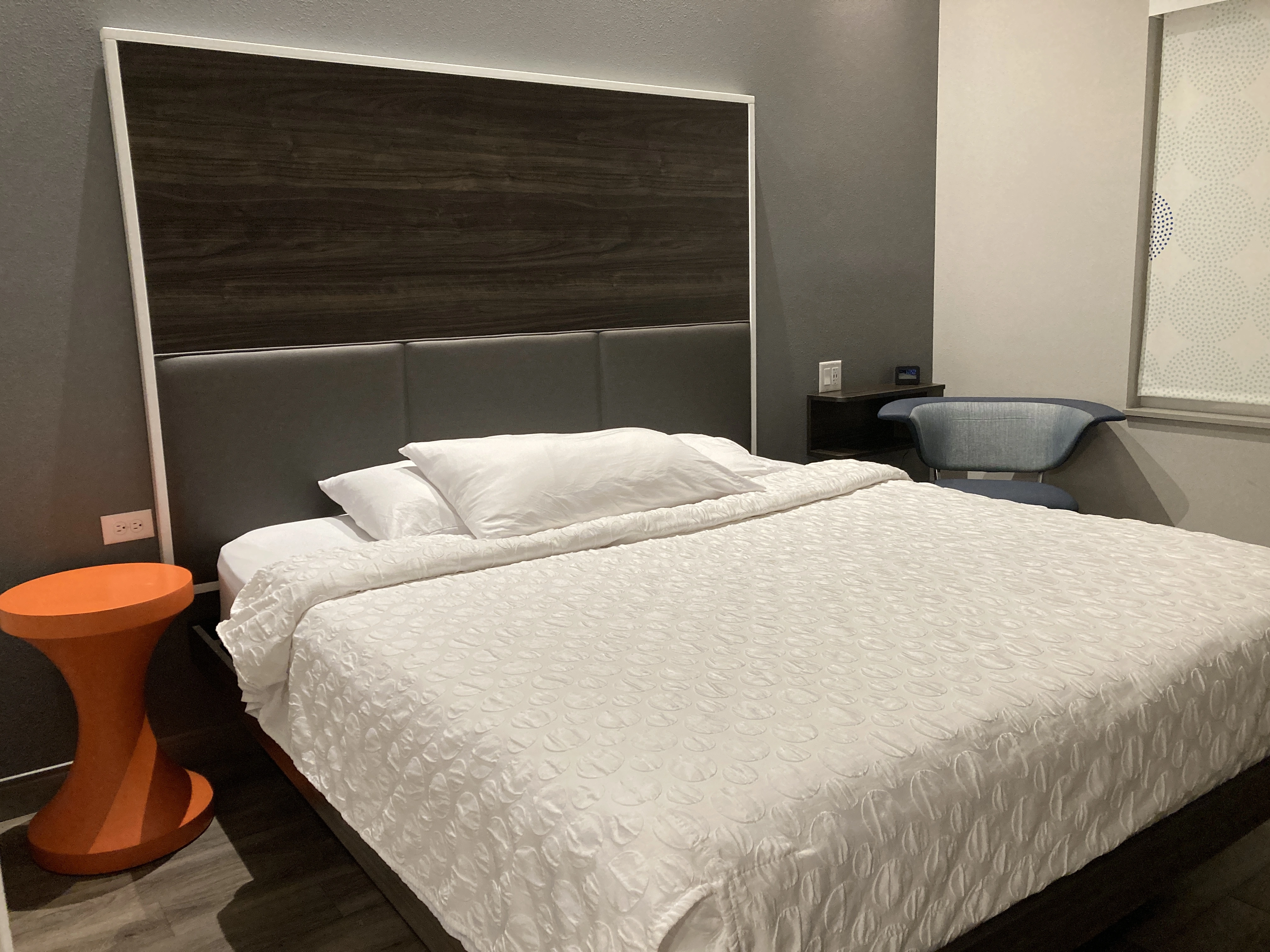
Travel Tips
Travel Tuesday: Using an International Power Converter vs. Power Adapter
Traveling internationally can often present a number of changes and challenges — some of which you might not think of off the bat. Sure, we all know that visiting other parts of the world may mean a language barrier, the need for a different type of currency (although credit cards are starting to make that less of a factor, and other cultural differences. However, how often do you think about charging your devices while abroad?
If you’re saying to yourself, “No big deal — I can pick up a power adapter just about anywhere these days,” you’re mostly right. That said, there are some situations where what you actually might need is a power converter. What’s the difference? Let’s take a look at a few basics to know about power adapters versus power converters — as well as my recent experience with the FOVAL Power Step-Down Voltage Converter.
Power Adapter vs Power Converter: What’s the Difference?

Adapter
Most of the time, if you’re traveling overseas, you’ve probably seen various types of adapters you can use in order to plug your North American-style plug devices into other socket types. Simply put, these devices allow you to plug your original device into a socket and then provide the correct prongs to plug into the wall at your destination.
This could be as simple as an extra puck you put in between the wall socket and your device or could be a “universal adapter” that features several different (and fairly clever) solutions to ensure you always have the right plug type available to you.
To be clear, in most cases, these adapters are perfectly fine for most devices — but not just because of what they offer. In reality, if you look at the power cable or brick for the device you plan to use, you’ll likely notice that it’s dual voltage rated. However, some notable exceptions include things like hairdryers, electric kettles, and others that could be damaged if used with higher voltage.
Converter
As you may have guessed, this is where power converters come in. Rather than just allowing you to physically plug into a foreign outlet, power converters also lower the voltage. In turn, devices that would otherwise not be supported may be useable with a proper converter. That said, you should always be sure to read the fine print to see what’s recommended.
Pros and cons of converters
So, if converters do the same job as an adapter and then some, why not just opt for one of them? Well, there are a few downsides to note as well.
First, power converters are typically more expensive than adapters. While a universal adapter might set you back $10, a converter could be four times that or more (mine was around $40). Another consideration is that power converters are larger and bulkier than adapters on the whole. Depending on how light you like to pack for your international travels, this could make converters a no-go.
On the other hand, as you’ll see, power converters can be useful for charging multiple devices at once. Additionally, if you do need to bring devices that require power reduction, then a converter is really your only choice. Still, travelers will need to weigh these pros and cons when determining which option is right for them.
Buying a Power Converter and What I Purchased

Truth be told, my interest in a power converter didn’t come from my need to use a curling iron or other such device while abroad but, instead, was related to one odd issue I’ve had on previous trips.
See, since I typically work while traveling, I spend a fair amount of my time on my laptop when in my hotel room. The problem is that, when I’m in countries that use a higher voltage, I can actually feel the extra power in my body. It’s very hard to explain but it causes a sensation I don’t appreciate. Thus, I was hoping that using a converter would help reduce this issue. So, prior to my trip to France back in December, I hit up Amazon.
Navigating Amazon
It’s no secret that many sellers on Amazon try to make their products rank by stuffing as many descriptors and keywords into their titles as possible. Unfortunately, this not only makes such products annoying to browse but can also make listings misleading.
For example, while we’ve covered the basic differences between adapters and converters, it seems some sellers could use a lesson themselves. Because of this, you’ll want to survey the page as closely as possible and perhaps peruse the Q&A and reviews sections for further info.
FOVAL Power Step-Down Voltage Converter
Knowing that I didn’t want to spend too much on trying to solve this pet peeve of mine and also wanting something relatively small, I eventually settled on the FOVAL Power Step-Down Voltage Converter. The first reason I went with this option was the price tag: under $40. Next, looking at the dimensions, the size of the device made it packable but solid (I preferred this item’s two plug set-up to others with more, which would be unnecessary for me). Lastly, I also liked that the FOVAL had four USB-A ports so that I could charge a variety of devices from one central hub.
As for important things to note, while it does advertise that this should work for curling irons and straighteners, it also says it’s not designed for hair dryers. That’s a bit weird to me since, if it’s converting the power down, shouldn’t it be safe for such things? But, since I didn’t intend on using these items anyway, it wasn’t a deal-breaker for me.
In terms of size, the FOVAL turned out to be about what I expected — and I was very glad I didn’t opt for anything larger. By happenstance, the cord it came with was already a Euro plug, but other adapter styles were included. It also came with a handy bag to store the device in, which I made use of.
When I arrived at my hotel room in France, the FOVAL was very easy to plug-in and I confirmed that all of the USB ports were working properly. However, I was a bit worried when I attempted to use the small charger that came with my MacBook Air and began having issues.
While the charging chime on my laptop made me think I was fine at first, it soon showed I was no longer charging just a few seconds later. Then, the chime sounded again… followed by another disconnection. This cycle continued before I gave up and unplugged without resolution. I tried unplugging all of the USB items and trying again, but no dice.
The good news is that, after swapping my smaller charger for the larger one that came with our previous MacBook Pros, things worked fine. In fact, while I did occasionally feel the extra power, the effects were greatly reduced, making for a much more comfortable working experience. Alas, I did have some other minor issues — namely that, from time to time, the FOVAL’s fans would kick up. However, this didn’t happen too often and they weren’t too loud when they did.
Overall, considering that the FOVAL mostly fixed the issue I wanted to correct when I bought it, I really can’t complain much. Additionally, having those USB plug spots proved to be very convenient as it meant we didn’t need to worry about using adapters elsewhere in the room. However, I’m not sure why my Macbook Air charger caused issues with the device. Still, I’m happy enough with my purchase for now — but might eventually invest in another converter that might fix these nitpicks.
Despite occasionally being used interchangeably, power adapters and power converters are actually quite different. As for which makes sense for your travels, the answer will depend on how much you plan on packing, what devices you’ll need, and how much you want to spend on your purchase. For me, I plan on bringing both with me when traveling abroad — and specifically giving my FOVAL Power Step-Down Voltage Converter a few more tries.




